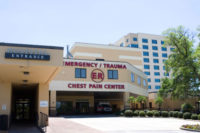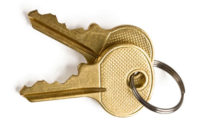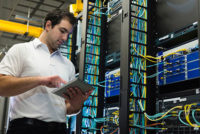Building on their widespread use and popularity as a security management tool, key control systems’ functionality has been expanded to include custom modules and lockers that can accommodate plastic card keys or other valuable items. Lockers, available in various configurations, can be used for storing credit cards, small firearms, cellphones, two-way radios, laptop computers, tablets, cash trays and so on, and can be managed as efficiently as keys in key control systems.
Locker modules can easily be incorporated into existing key control systems or configured as stand-alone asset management systems. Their operation is identical to a key management system in that only pre-authorized users can access items in the lockers. Items can be returned to any open locker for convenience, and systems can be set up as a personal storage space for one or multiple users. The systems are also engineered to alert security management in case of an incident. An open door, the use of force to gain access, a power failure or even the misuse of the keypad will trigger an alarm and record the event in the log file.
To help in the selection of an asset management system, the following system features should be considered:
- Security: Asset management systems are designed so that only authorized users can access stored items. Permission levels can be established for each user code such as time of day when access is granted or number of hours the item is allowed to be in use and so on. System managers can monitor data from any desktop connected to the network.
- Tracking: A tracking system records who accessed the locker, when and for how long an item was removed. The system software can run activity reports and sort based on different criteria making it possible for system managers to generate useful and practical management reports, then analyze the information to maintain maximum control of access and security issues.
- Scalability: Systems can be tailored to individual requirements both now and in the future. This allows organizations to prepare for and adapt to change with minimal or no disruption to the daily operation. Locker modules and key control cabinets can be added where and when needed to support organizational growth while the overall system maintains high reliability and performance including the common usage of data bases and programming. Each additional module can be controlled by a single console and monitored by the software.
- Cost: The cost of implementing an electronic asset management system can pay for itself when compared to the cost of losing master card keys or valuable electronics. In addition, upgrades can be accomplished without system overhauls or costly installations.
- Convenience: A key control and asset management system is easy to use and can accommodate a variety of items. Items can be returned to any open locker in the system, and if they are not returned, the software can send an e-mail alert to the system manager.
- Integrity: Rugged stainless steel construction and tamper-proof alarms enhance the reliability of the system. Any time the locker is opened, the event is recorded. If a door is left open, force is used to gain access, there is a power failure or the keypad is misused, the action will trigger an alarm and record the event in the log file.
- Access: PINs, access control cards, biometrics or any combination of the three are the most commonly used methods for accessing keys. Where protection of the locker module itself is mission-critical, a remote box configuration provides an additional layer of protection. The locker is installed in a secure room and requires a second individual’s PIN input and verification in order for an authorized employee to access items from the locker.
- Aesthetics: Compact size, top and bottom mounting options and aesthetically pleasing looks offer added options for installation.
- Integration: Compatibility with other security systems and network access offer added richness and usability to a system and integration with existing data bases saves time and money. A built-in RS-232 communications port allows ease of use for direct connectivity to printers or other devices, or networked connectivity via Ethernet.







